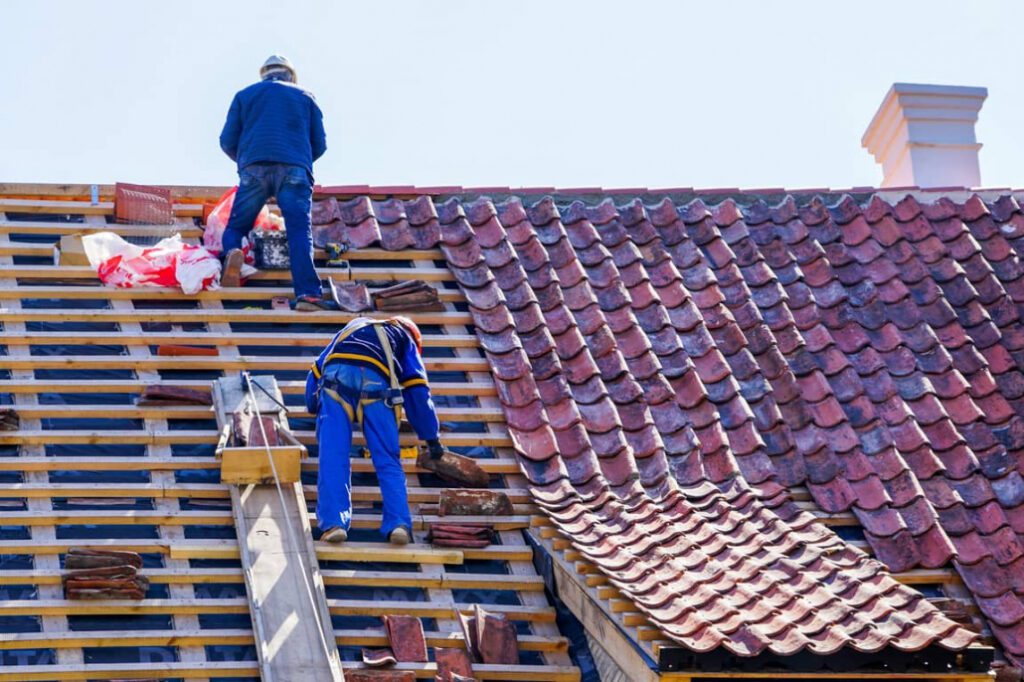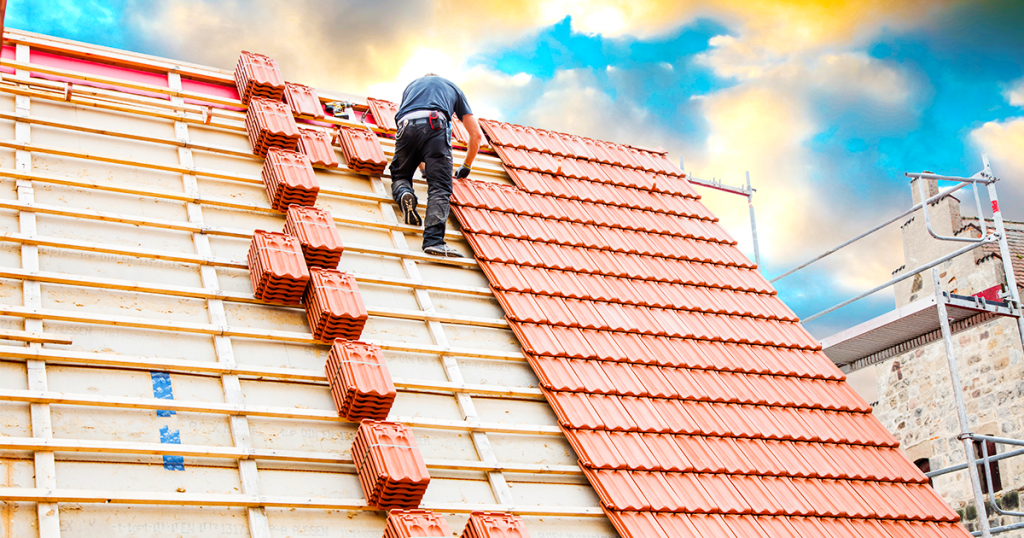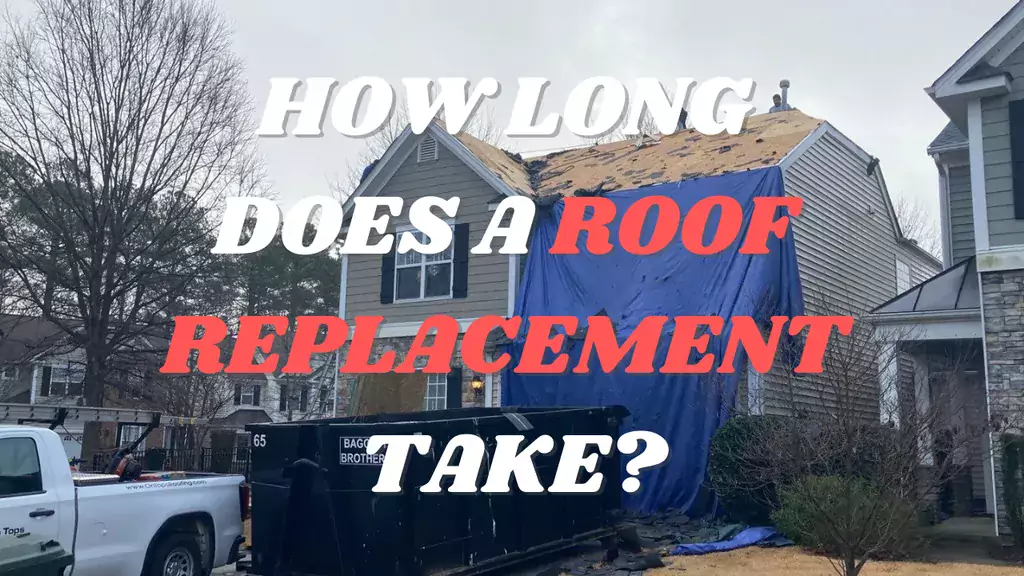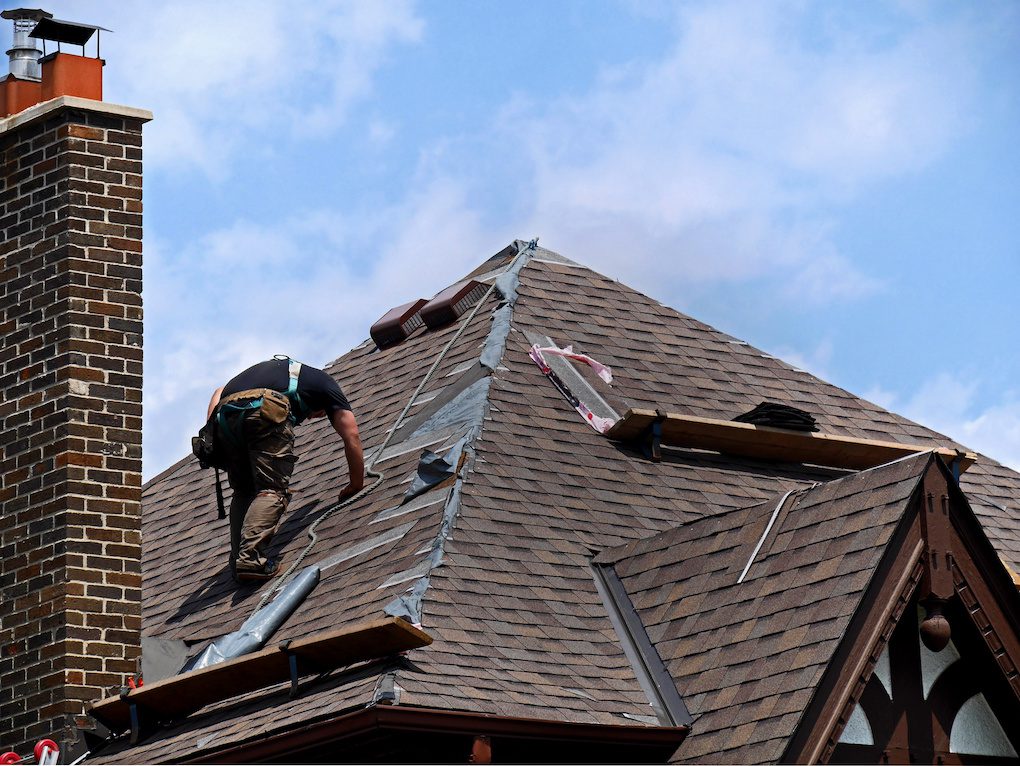In the article “How Long Does It Take To Remove And Install A Roof?”, we explore the time it takes to undertake the crucial task of replacing a roof. Whether you’re planning a roofing project for your home or simply curious about the timeline involved, this article offers valuable insights into the duration of this process. From the removal of the old roof to the installation of the new one, we will guide you through the various factors that influence the timeframe, ensuring you have a comprehensive understanding of what to expect. So, if you’ve ever wondered how long it takes to complete such a project, read on to uncover the answer!

Factors Affecting the Duration
When it comes to removing and installing a new roof, several factors can affect the overall duration of the project. Understanding these factors is crucial for planning and ensuring a smooth process. Here are some key factors that can impact the timeline:
Size and complexity of the roof
The size and complexity of the roof play a significant role in determining how long it will take to remove and install a new one. Larger roofs naturally require more time and effort, especially if there are multiple levels or intricate architectural features. A straightforward, smaller roof may take significantly less time compared to a sprawling, complex one.
Type of roofing material
The type of roofing material chosen for the project can also affect the duration. Different materials have unique installation requirements and techniques. For example, asphalt shingles are generally quicker to install compared to metal or tile roofs, which may require more time and precision. Considering your preferred roofing material is essential when estimating the timeline.
Weather conditions
Weather conditions can have a significant impact on the roof removal and installation process. Harsh weather, such as heavy rain, storms, extreme heat, cold temperatures, or snow and ice, can hamper progress and even pose safety risks for the workers. It’s vital to consider the weather forecast and plan the project accordingly to minimize potential delays.
Number of workers
The number of workers allocated to the project can influence the timeline. More workers can expedite the progress by dividing tasks and working simultaneously. Conversely, if the number of workers is limited, the completion time may extend. Hiring an adequate workforce is crucial for maintaining an efficient pace throughout the project.
Availability of equipment
Having the necessary equipment readily available is another significant factor in determining how long the project will take. If the required tools and machinery are not accessible or in good working condition, it can result in delays and hinder the work efficiency. Ensuring proper equipment availability and functionality is essential for a smooth roof removal and installation process.
Accessibility of the roof
The accessibility of the roof also affects the duration. If the roof is easily accessible and there are no obstacles hindering movement, the project can progress more quickly. However, if there are structural or architectural challenges that make reaching certain areas difficult, the time required for the project may increase. Assessing the roof’s accessibility beforehand can help in estimating the timeline accurately.
Preparation and clean-up time
Before the installation of a new roof, appropriate preparation and clean-up are necessary. This includes removing the old roofing material, inspecting the underlying structure, and repairing or replacing any damaged areas. Depending on the extent of the preparation and clean-up required, the duration of this phase can vary significantly. Thoroughly evaluating the condition of the roof and planning for any necessary repairs or replacements will contribute to a smoother process.
Additional work or repairs needed
In some cases, additional work or repairs may be required during the roof removal and installation process. This could include fixing structural issues, replacing damaged areas, or addressing any unexpected problems that arise. The scope and complexity of these additional tasks can impact the overall timeline. Anticipating and planning for potential repairs or additional work before starting the project can help avoid unnecessary delays.
Permit and inspection requirements
Obtaining necessary permits and scheduling inspections can add additional time to the project. Depending on your location, there may be specific requirements and guidelines that need to be followed. It is essential to factor in the time needed to obtain permits and schedule inspections to ensure compliance and avoid any unnecessary delays.
Contractor’s efficiency and experience
The efficiency and experience of the contractor you hire also play a significant role in determining the duration of the project. An experienced and reputable contractor will have the necessary skills, knowledge, and resources to complete the roof removal and installation efficiently. They will have a streamlined process in place, enabling them to work more quickly and effectively.
Roof Removal Process
Now that we have explored the various factors affecting the duration of a roof removal and installation project, let’s delve into the process itself. Understanding the steps involved in both the removal and installation stages can provide valuable insight into the timeline and what to expect.
Evaluation and planning
Before any work begins, a thorough evaluation of the existing roof is necessary. This evaluation helps determine the condition of the roof, identify any potential issues, and plan for the removal and installation process. Taking the time to evaluate and plan properly can ultimately save time and prevent avoidable setbacks during the project.
Safety measures
Safety is of utmost importance during any roofing project. The team should establish and implement all necessary safety measures, such as using proper safety equipment, securing the work area, and adhering to safe work practices. This ensures the well-being of the workers and reduces the risk of accidents or injuries, contributing to a more efficient workflow.
Removal of old roofing material
The first step in the roof removal process involves stripping away the old roofing material. This can include removing the existing shingles, tiles, or metal panels. Depending on the type and condition of the material, specialized tools and techniques may be required. The time needed for this phase varies depending on the size and complexity of the roof and the condition of the existing material.
Disposal of debris
After the removal of the old roofing material, proper disposal of the debris is essential. The debris should be collected, loaded, and disposed of in accordance with local regulations. This step can take some time, especially if there is a significant amount of debris or if certain disposal restrictions are in place.
Inspecting the underlying structure
Once the old roofing material has been removed and the debris disposed of, a thorough inspection of the underlying structure is performed. This inspection helps identify any damage or issues that may need to be addressed before the new roof can be installed. Depending on the findings, repairs or replacements may be necessary, potentially extending the overall timeline.
Repairing or replacing damaged areas
If any damage or issues are identified during the inspection, repairs or replacements are carried out accordingly. This could involve fixing rot, replacing damaged wood, reinforcing the underlying structure, or making any necessary structural improvements. The time required for these repairs will depend on the extent of the damage and the complexity of the repairs needed.
Preparing the surface
Once the inspection and repairs are complete, the surface is prepared for the installation of the new roofing material. This may involve cleaning, applying underlayment, and ensuring proper ventilation and insulation. The preparation process is vital for ensuring the longevity and effectiveness of the new roof. The time needed for this phase will vary depending on the size and complexity of the roof and the specific requirements of the chosen roofing material.
Roof Installation Process
After the completion of the roof removal process and surface preparation, the installation of the new roof can begin. Each type of roofing material has its own installation process, and the time needed can vary accordingly. Let’s explore the general steps involved in the roof installation process:
Material delivery and setup
Before the installation can commence, the necessary materials and equipment need to be delivered to the site. This may include the roofing materials, adhesives, fasteners, and any additional components specific to the chosen roofing system. The materials are then set up and organized for ease of access during the installation process.
Installation of underlayment
Underlayment is an essential component of the roofing system that provides an additional layer of protection against moisture and ensures a smooth, even surface for the roofing material. Installing underlayment is typically the first step in the installation process. The underlayment is carefully placed and secured according to the manufacturer’s guidelines.
Installation of roof flashing
Roof flashing is installed to prevent water penetration around areas such as chimneys, vents, and skylights. It acts as a barrier to direct water away from vulnerable points on the roof. The installation of roof flashing involves strategically placing and securing the flashing material in these critical areas to minimize the risk of leaks and water damage.
Installing shingles or roofing tiles
For asphalt shingle roofs, the individual shingles are installed using the appropriate fastening techniques. Each shingle is carefully positioned, aligned, and secured in place. For tile roofs, the tiles are laid out and fastened, ensuring proper overlap and alignment. The installation of the roofing material requires precision and attention to detail to ensure a durable and aesthetically pleasing result.
Sealing and fastening
Proper sealing and fastening of the roofing material are essential for long-term performance and weather resistance. This step involves applying adhesives, sealants, or fasteners to ensure a watertight and secure bond between the roofing material and the underlying structure. The specific sealing and fastening methods will depend on the chosen roofing material and the manufacturer’s recommendations.
Adding ventilation and insulation
Ventilation and insulation are crucial for maintaining a comfortable and energy-efficient living space. During the roof installation process, ventilation systems and insulation materials are typically added to improve airflow, regulate temperature, and prevent moisture buildup. Proper ventilation and insulation contribute to the longevity and performance of the new roof.
Final inspections
Once the installation is complete, a final inspection is conducted to ensure that the new roof meets all necessary quality standards and local building codes. This inspection involves checking for any loose shingles, proper alignment, secure fastening, and overall structural integrity. Final inspections provide peace of mind that the roof has been installed correctly and will perform as intended.
Timeline for Asphalt Shingle Roof
The timeline for removing and installing an asphalt shingle roof can vary depending on several factors. Here is a general breakdown of the time required for each phase:
Removal: 1-2 days
Inspection and repairs: 1-2 days
Surface preparation: 1 day
Installation: 1-2 days
Clean-up and final inspections: half a day
Keep in mind that these timelines are estimates and can be influenced by factors such as roof size, complexity, weather conditions, and the efficiency of the contractor and their team.

Timeline for Metal Roof
The timeline for removing and installing a metal roof will generally be longer compared to an asphalt shingle roof due to the unique features of metal roofing systems. Here is a general breakdown of the time required for each phase:
Removal: 1-3 days
Inspection and repairs: 1-2 days
Surface preparation: 1 day
Installation: 2-4 days
Clean-up and final inspections: half a day
Again, these timelines are approximate and can vary based on the specific project and circumstances.
Timeline for Tile Roof
Tile roofs require meticulous installation due to the interlocking nature of the tiles and the complexity involved. Here is a general breakdown of the time required for each phase:
Removal: 1-3 days
Inspection and repairs: 1-2 days
Surface preparation: 1 day
Installation: 5-7 days
Clean-up and final inspections: half a day
Tile roof installations typically take longer due to the precise alignment and positioning that is required for a visually appealing and structurally sound result.

Timeline for Flat Roof
Flat roofs have their own unique installation process, which can affect the overall timeline. Here is a general breakdown of the time required for each phase:
Removal: 1-2 days
Inspection and repairs: 1-2 days
Surface preparation: 1-2 days
Installation: 3-5 days
Clean-up and final inspections: half a day
Flat roof installations typically involve additional time for surface preparation and specialized installation techniques.
Temporary Weather Delays
While proper planning and scheduling can help minimize weather-related delays, sometimes temporary interruptions are unavoidable. Here are some common weather conditions that can temporarily halt or slow down the roof removal and installation process:
Rain or storms: Heavy rain or storms can pose safety risks and hinder progress, particularly during the removal and installation phases. It may be necessary to halt work until the weather improves.
Extreme heat: Excessive heat can make working conditions uncomfortable and may affect the performance of certain roofing materials or adhesives. Taking breaks and scheduling work during cooler hours can help mitigate the effects of extreme heat.
Cold temperatures: Extremely cold temperatures can impact the flexibility and effectiveness of certain roofing materials, making them more challenging to handle and install. Special precautions may need to be taken to ensure proper installation and avoid damage.
Snow or ice: Accumulated snow or ice on the roof can create hazardous conditions and impede progress. It may be necessary to remove the snow or wait for it to melt before work can resume safely.
It’s important to work closely with your contractor and remain flexible during the project to account for any temporary weather delays that may arise.

Tips to Expedite the Process
While several factors impacting the duration of a roof removal and installation project are beyond your control, there are steps you can take to help expedite the process. Here are some tips to consider:
Choose a reputable and experienced contractor: Hiring a reputable and experienced contractor will ensure that the project is handled efficiently and professionally. Their expertise and knowledge of the process can significantly contribute to a streamlined timeline.
Ensure proper planning and communication: Clear communication and thorough planning between you and your contractor are crucial. Discussing expectations, timelines, and any specific requirements beforehand will help avoid misunderstandings and delays during the project.
Obtain necessary permits in advance: Research the permit requirements in your area and obtain the necessary permits well in advance. Delays in permit processing can significantly impact the timeline, so it’s important to plan accordingly.
Consider scheduling during favorable weather: While you can’t control the weather, scheduling your roof removal and installation during more favorable weather conditions can help minimize potential delays. Consider the time of year and historical weather patterns when planning the project.
Have all materials and equipment ready: Ensure that all materials and equipment required for the project are available and ready before the start date. This includes the roofing materials, tools, safety equipment, and any additional components needed. Having everything on-site will prevent unnecessary delays or interruptions during the project.
Clear the work area before the start: Clearing the work area before the project begins can save valuable time. Remove any obstacles, such as patio furniture, vehicles, or debris, that may hinder the workers’ movement or slow down their progress.
Minimize additional work or repairs: Address any additional work or repairs needed before the start of the project. Completing these tasks beforehand will prevent disruptions during the installation and help keep the timeline on track.
Regularly communicate and follow up with the contractor: Regularly communicating and following up with your contractor throughout the project will help ensure that any issues or concerns are addressed promptly. Maintaining open lines of communication allows for efficient problem-solving and keeps the project on schedule.
Cost Considerations
In addition to the duration, it’s essential to consider the cost factors associated with a roof removal and installation project. Here are some cost considerations to keep in mind:
Labor costs: Labor costs typically represent a significant portion of the total project expenses. The complexity of the project, the number of workers involved, and the duration of the work will all influence the overall labor costs.
Cost of materials: The cost of the roofing materials themselves will vary depending on the type, quality, and quantity required. It’s important to discuss and understand the costs associated with the chosen roofing material before starting the project.
Additional work or repairs: If additional work or repairs are necessary during the project, such as fixing structural issues or replacing damaged areas, these costs should be factored into the overall budget.
Permit fees and inspections: Permit fees and inspection costs are also worth considering. Depending on your location, there may be fees associated with obtaining the necessary permits, as well as inspections throughout the project to ensure compliance with building codes.
It’s best to obtain detailed quotes from multiple contractors and discuss all cost considerations upfront to have a clear understanding of the project’s financial implications.
In conclusion, the duration of a roof removal and installation project can vary depending on several factors, including the size and complexity of the roof, the chosen roofing material, weather conditions, the number of workers, the availability of equipment, the accessibility of the roof, preparation and clean-up time, additional work or repairs needed, permit and inspection requirements, and the efficiency and experience of the contractor. By understanding these factors and following the suggested tips, you can help ensure a smooth and timely process for your roofing project.
